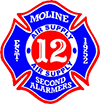Discover the key to maintaining safety in the midst of an active fire environment with our comprehensive guide for support personnel. From effective communication protocols to essential personal protective equipment, this three-sentence hook unveils the crucial strategies needed to ensure the well-being of support personnel and maximize their contribution to firefighting operations. Arm yourself with the knowledge and protocols necessary to thrive in the heat of the battle and safeguard lives in the face of danger.
- Communication and Coordination: Establish clear lines of communication and coordination with support personnel, ensuring that everyone involved understands their roles and responsibilities in the firefighting operation.
- Safety Briefings: Conduct thorough safety briefings with support personnel, emphasizing the hazards associated with the active fire environment, the importance of situational awareness, and the adherence to safety protocols.
- Personal Protective Equipment (PPE): Ensure that all support personnel are equipped with appropriate personal protective equipment, including fire-resistant clothing, helmets, gloves, and boots, to safeguard against heat, flames, and falling debris.
- Identification and Visibility: Clearly identify support personnel with visible identifiers, such as high-visibility vests or helmets, to enhance their visibility to other firefighters and ensure they are easily recognizable in the chaotic fire scene.
- Accountability Systems: Implement accountability systems, such as personnel tracking or buddy systems, to maintain awareness of the whereabouts and safety of support personnel throughout the firefighting operation.
- Fire Behavior Education: Provide support personnel with basic education on fire behavior, including the dangers of flashovers, backdrafts, and structural instability, to enhance their understanding of potential risks in the active fire environment.
- Evacuation Routes and Safety Zones: Establish designated evacuation routes and safety zones for support personnel, ensuring they have a clear path to exit the hazardous area quickly and safely in case of emergencies.
- Continuous Risk Assessment: Conduct ongoing risk assessments and hazard identification to identify changing conditions and potential dangers in the active fire environment, allowing for timely adjustments to ensure the safety of support personnel.
- Communication Protocols: Establish effective communication protocols between firefighters and support personnel, enabling timely updates, alerts, and emergency signals to ensure the safety of everyone involved.
- Regular Training and Drills: Provide regular training sessions and conduct drills for support personnel to practice safety procedures and familiarize themselves with firefighting operations, enabling them to respond effectively and minimize risks in an active fire environment.
By following these ten guidelines, firefighters and support personnel can work together to navigate the complexities of an active fire environment safely, mitigating risks and ensuring the well-being of all individuals involved in the firefighting operation.
